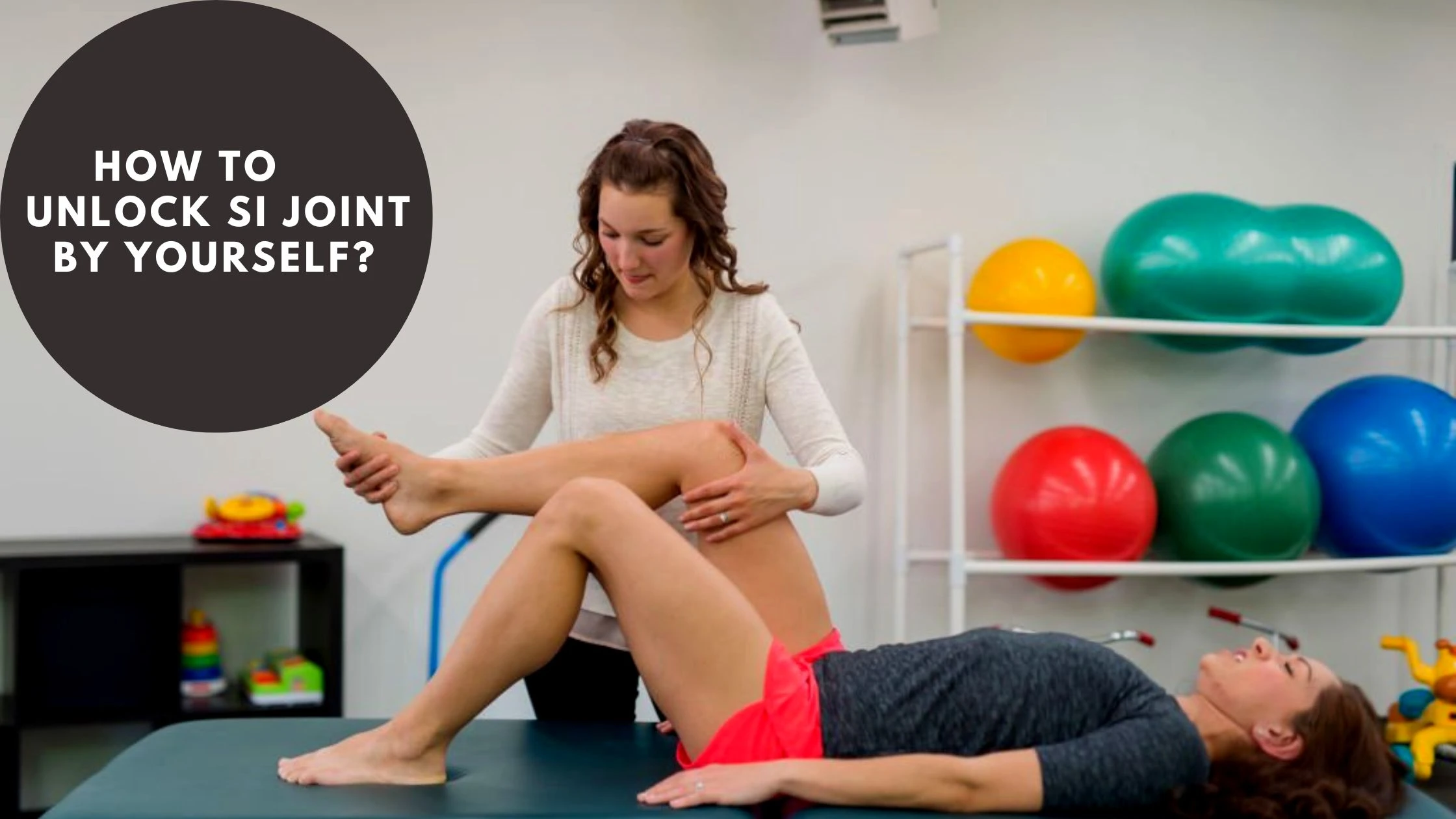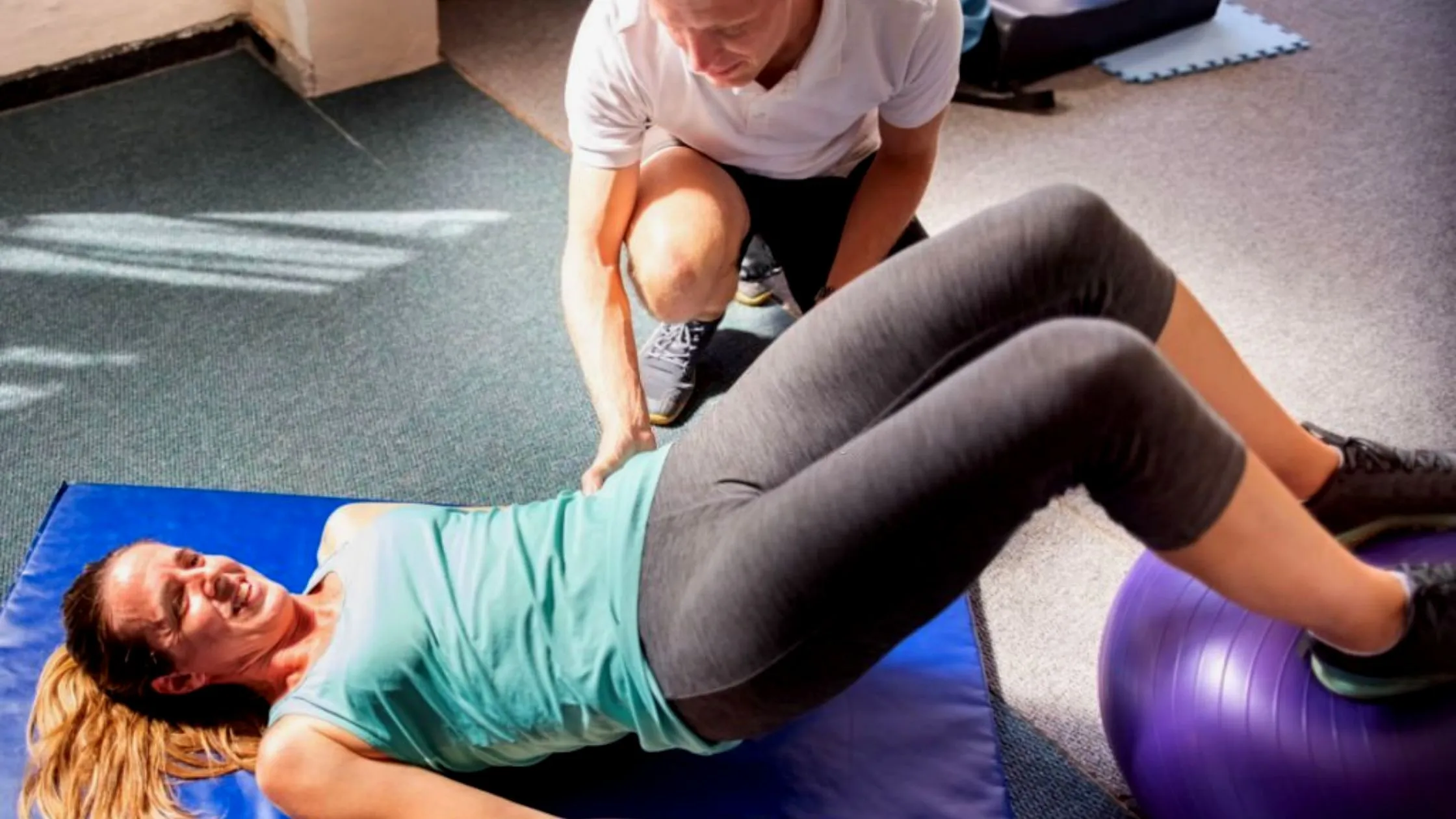How To Unlock SI Joint By Yourself? Things To Know!

The sacroiliac joint or SI joint is located in the pelvis. It is the joint that links the iliac bone or pelvis to the sacrum, which is the lowest part of the spine above the tailbone. This joint is connected with the help of strong ligaments.
In our body, the sacrum supports the spine and it is in turn supported by an ilium on each side. The sacroiliac joint is a strong joint and it supports the weight of the entire upper body.
What Does Sacroiliac Joint do?
The joint help in the transfer of weight and forces between the upper part of your body and legs. It is a crucial part that helps in the energy transfer between the legs and the torso.

As the sacroiliac joint is stabilized by a network of ligaments and muscles, the motion in this joint is very limited. Normally SI joint has a small amount of motion, that is, two to four millimeters of movement in any direction.
The SI joints in women are less stiff than in men, as it is necessary for childbirth. The motion in sacroiliac joints generally decreases as you age.
The sacroiliac joint is a true diarthrodial joint in our body. The articular surfaces of sacroiliac joints are ear-shaped and contain irregular ridges and depressions.
The concave part of the sacral surface is covered with thick cartilage known as hyaline cartilage and its convex iliac or pelvic surface is lined with a thin layer of fibrocartilage.
The sacrum and ilium of the pelvis are not in contact with the upper portion of the joint, instead, they are connected with powerful posterior, inter-osseous, and anterior ligaments.
The frontal part and lower half of the sacroiliac joint is a typical synovial joints with a type of cartilage on joint surfaces.
The sacroiliac joint is an axial joint that has an approximate surface area of 17.5-centimeter square. The sacroiliac joint surface is found to be smooth in juveniles and becomes irregular as one age.
Sacroiliac joints are prone to injuries and can degenerate over time and cause low back or spine, pelvic, buttock, or leg pain. The sacroiliac joint may undergo mechanical strain and injury either by a combination of vertical compression and rapid rotation (which can happen when carrying a heavy object and twisting), or when falling on the backside.
This type of injury can lead to ligamentous laxity and cause sacroiliac joint pain. Problems in the sacroiliac joint can also result from lumbar spine surgery as there will be damage to the ligament.
The sacroiliac joint pain can also be caused by the difference in the size of the legs, gait abnormalities, strain from the intense workout, and trauma.
SI joints can also be affected by arthritic conditions like ankylosing spondylitis, juvenile rheumatoid arthritis, and psoriatic arthritis. Infections like staphylococcus, gonorrhea, and tuberculosis can also affect the SI joint.
Unlocking A Sacroiliac Joint By Yourself
Sometimes your SI joint gets into an unnatural position due to sudden twisting or jerking motion. This is commonly referred to as the locking of the SI joint.
This can cause pain and uneasiness. You can unlock yourself from this position by using simple exercises. Here we will discuss some very easy-to-follow steps that can help you to unlock your locked sacroiliac joint.
Exercise 1
Here is a simple exercise that can help to self-pop your sacroiliac joint in seconds. This workout can be done from anywhere. All you need is a stable and sturdy chair to sit on. Sit on the chair and scoot to the edge of the chair.
You should keep a good upright posture. Keep your legs hip-width apart and keep your feet flat on the floor. Take your hands and keep them on the outside of the knees.
Now drive your knees into your hands and at the same time resist this movement for a nice isometric exercise. You will feel a lot of firing across the pelvis into those SI joints.
Focus on that. You need to hold this comfortably for five seconds. Now relax and after that repeat this process five times. Next, you have to make fists and put them together. Put them inside the knees.
This time we have to squeeze inward while our hands resist it. Now you will feel a good release into the SI joints.
Hold for five seconds and then relax. Then repeat it another five times. If you don’t want to use your hands between your knees, you can use something like a pillow, a rolled-up towel, or a basketball instead.
Exercise 2
For this workout, you will have to lie flat on your stomach. You can do this on a bed or on the floor. You have to position your legs straight at the knee and about hip-width apart. Keep pelvis and hips flat and lift legs towards the ceiling as far as you can.
You can feel that it activates areas across the lower back into the pelvis and SI joints. You have to hold in this position for five to ten seconds. Then relax and take a breath. Then repeat this up to five times.
Really challenge yourself with each repetition to take the legs up toward the ceiling even more. You can make this more challenging by spacing the legs out a little bit more. When you do this you will feel in the SI joints.
You can take this to next level by raising the legs up and letting the toes inwards and outwards. You will feel that the SI joints and muscles around there start to activate. By the end of this exercise, you will get that sudden self-release or pop.
Exercise 3
This exercise is known as a push-pull and it is a great way to self-release your SI joints in bed or on the floor. Lie on your back and lift both your legs and keep your knees bent at 90 degrees.
Take one hand and place it on the outside of a knee and take the other hand and place it on the inside of the knee.
Then we have to pull forward the first knee and push back the second knee. But we have to resist this motion and we have to hold in this position for two to three seconds.
Then just switch directions and then place the hands on the opposite side. When you do this you are going to feel a lot of good motion across the pelvis into the SI joints.
You have to hold this for about two to three seconds. Relax and then just switch over to another side. Try to do this for about ten to fifteen repetitions. You will be able to unlock the SI joint with this exercise.
Conclusion
Very slight motions are possible with SI joints. Sometimes the SI joint becomes locked due to sudden movements or injuries. You can unlock this joint by yourself if you do some simple exercises.
We have discussed some effective exercises that will help you to unlock your SI joint. If the condition does not improve with these exercises you can consult your physician for help.
Dr. Edward Zelman
Dr. Edward Zelman is a distinguished and highly respected medical professional who has dedicated his career to the field of general medicine. With a profound commitment to patient care and a wealth of knowledge acquired over decades of practice, Dr. Zelman has earned a reputation as a trusted healthcare provider in his community. With a career defined by excellence and an unwavering commitment to the betterment of his patients and the broader community, Dr. Edward Zelman stands as a pillar of the medical field, dedicated to the principles of healing and compassionate care. At present, Dr. Edward Zelman is researching safe and effective natural remedies that can restore as well as maintain the youthful functioning of the body.
View All By Dr. Edward






